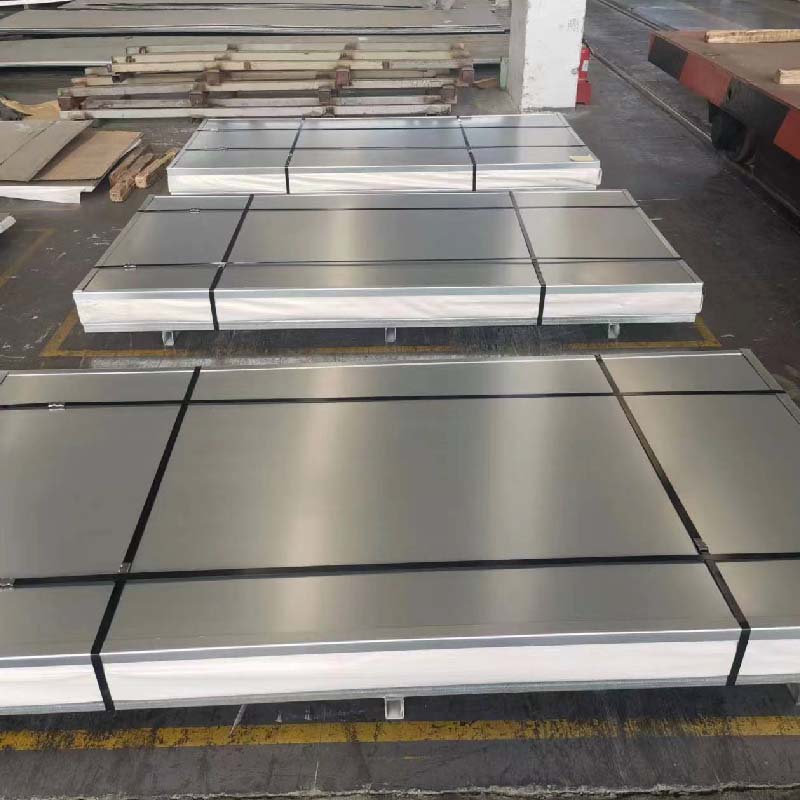News

Since its introduction in 1913, stainless steel has been admired by engineers and metallurgists as a superior product—it is durable, corrosion-resistant, and looks beautiful in almost every environment. Today, metal fabrication companies are rolling stainless steel sheets and plates, or forming the metal into tubes, with sales of approximately 60.6 million tons per year.
What is stainless steel?
Stainless steel is a thin, flat piece of stainless steel that is used in a variety of industries, including manufacturing, aerospace, pharmaceuticals, and electronics. It features strong corrosion resistance, strong structure, and a sleek, modern look.
Stainless steel is made from an alloy containing iron, chromium, and other elements such as nickel and molybdenum. By definition, stainless steel contains at least 10.5% chromium, which ensures its signature corrosion resistance.
What are the advantages of using stainless steel?
Corrosion resistance: Stainless steel's competitive advantage lies in its corrosion resistance, which comes from a thin, invisible layer of chromium on its surface that protects the metal surface from oxidation. Because this passive layer of protection can break down in localized areas (a phenomenon known as pitting), manufacturers add other protective elements such as nickel, manganese, and molybdenum.
Durability: Stainless steel is extremely resistant to impact, abrasion, and extreme temperatures. While it may wear slightly faster than carbon steel in certain applications, its overall strength and toughness make it a reliable choice.
Aesthetic Appeal: The bright, shiny surface of stainless steel never goes out of style, and because manufacturers can give the metal a brushed, polished, or matte finish, there are a variety of finish options for nearly any decorative or architectural use.
Ease of Fabrication: While stainless steel is harder than many other metals, it is easy to cut, weld, or form into a variety of shapes. They can be cut with laser cutting, water jet cutting, or shearing, and, while hard, can be bent with a press brake.
Hygienic Properties: Stainless steel's nonporous surface is easy to clean, making it ideal for food service and medical environments.
Chemical Composition of Stainless Steel
The properties of stainless steel depend on the elements that make it up. Each stainless steel grade has its own specific alloy composition, but all grades contain at least 10.5% chromium. It is this element that makes stainless steel stainless. They also share other standard elements, such as:
Iron: All steels start with iron. Iron is the basis of alloys.
Carbon: All steels contain carbon, which gives iron its strength and hardness.
Silicon: This iron stabilizer deoxidizes the metal, making the steel corrosion-resistant.
Manganese: Manganese is a stabilizer that strengthens and hardens metals.
Titanium: This element improves weldability and reduces intergranular corrosion.
Nickel: As the nickel content in the alloy increases, formability and toughness increase.
Molybdenum: Molybdenum enhances resistance to pitting and crevice corrosion.
What are the grades of stainless steel?
There are five major categories of steel and more than 150 grades. The category refers to the atomic structure of the metal, while the grade is a standardized classification that indicates the composition, properties, and intended use of a particular steel alloy.
Stainless steel grades help manufacturers, engineers, and builders choose the right material for a specific application. Stainless steel is divided into two main categories: austenitic and ferritic, with the most common grades being the 300 series and 400 series.
Austenitic Stainless Steel
Austenitic stainless steel is known for its excellent corrosion resistance and versatility.
Grade 304/304L: The most common grade of stainless steel is grade 304, which is great for general purpose use. It contains a minimum of 18% chromium and 8% nickel, making it hard and durable. Comparing grade 304 and grade 303: What is the difference between 303 and 304 stainless steel?
Grade 316/316L: The properties of grade 316 stainless steel include excellent resistance to harsh environments. While similar to grade 304, it contains molybdenum and has a slightly higher nickel content. Additionally, the L grades (which include 304L and 316L) have a maximum carbon content of 0.03%. The "L" indicates low carbon, which improves weldability. To learn more about the difference between 304 and 316, see "Understanding the Difference Between 304 Stainless Steel and 316."
Ferritic Stainless Steel
Ferritic stainless steel is magnetic and corrosion resistant.
Grade 409: Grade 409 stainless steel is a ferritic stainless steel known for its excellent resistance to corrosion and oxidation at high temperatures. It contains chromium, which gives it good weldability and durability. It is often used in automotive exhaust systems, offering a balance of performance and cost, but it is not as corrosion resistant as other high-grade stainless steels.
Grade 430: Grade 430 stainless steel is a ferritic steel with excellent corrosion resistance and formability. It contains chromium, making it more affordable. It is often used in kitchen appliances, trim, and automotive parts, and is oxidation resistant, but it is not as durable as other high-grade stainless steels in harsh environments. Unlike grade 304 stainless steel, which is generally non-magnetic (unless cold rolled), grade 430 stainless steel is naturally magnetic due to its ferritic structure. Read our guide to learn more about the differences between 430 grade and 304 grade stainless steel.
Navigation
Send Us A Message


